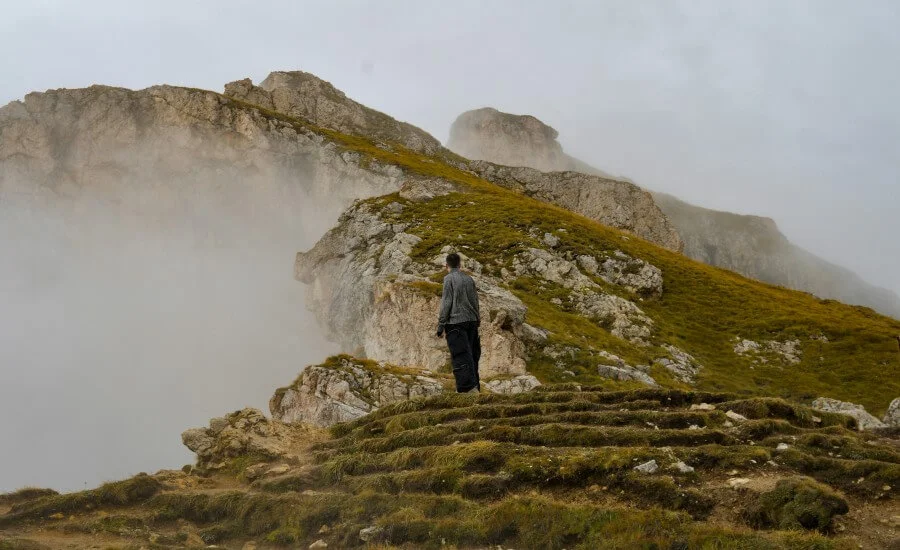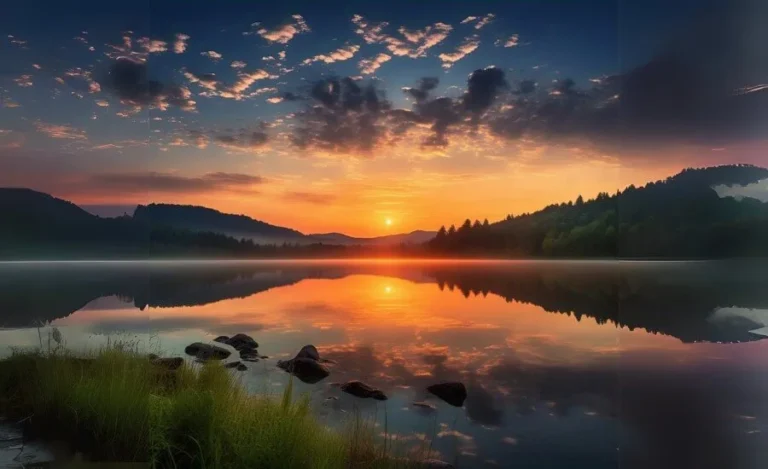
In our relentlessly fast-paced, digitally saturated world, a quiet revolution is unfolding underfoot. Ancient pathways, once trod by medieval monks, devout Hindus, or wandering mystics, are being rediscovered and walked anew. From the iconic Camino de Santiago in Spain to the challenging Himalayan trails leading to Kedarnath in India, reviving ancient pilgrimage routes speaks to a deep-seated human yearning – a desire to slow down, disconnect from the noise, and embark on a journey that nourishes the soul.
These walks are no longer solely the domain of the religiously devout. Modern spiritual seekers, encompassing a wide spectrum of beliefs and motivations – from those seeking clarity during life transitions, to adventurers craving connection with nature and history, to burned-out city dwellers desperate for a digital detox – are finding profound meaning on these timeworn trails.
This post explores the resurgence of these ancient journeys, delves into why they resonate so strongly today, illuminates the mindful experience of walking, and offers guidance for the contemporary pilgrim ready to lace up their boots and follow in the footsteps of generations past.
Echoes of Footsteps: What Are Ancient Pilgrimage Routes?

Ancient pilgrimage routes are historical trails leading to places of spiritual, religious, or cultural significance. For centuries, people have undertaken arduous journeys along these paths, often on foot, driven by faith, seeking healing, fulfilling vows, or searching for enlightenment.
These routes are etched into landscapes and collective memory, connecting significant shrines, temples, natural wonders, or sites associated with saints, deities, or historical events.
Globally renowned examples include:
- The Camino de Santiago (Spain): A network of routes leading to the shrine of St. James in Santiago de Compostela, walked by millions over centuries.
- The Kumano Kodo (Japan): A series of ancient trails through the Kii Mountains, linking sacred Shinto and Buddhist sites, recognised as a UNESCO World Heritage site alongside the Camino.
- The Via Francigena (Europe): An ancient road and pilgrim route running from France/Canterbury to Rome and onwards to Apulia.
- Mecca (Hajj – Saudi Arabia): The obligatory Islamic pilgrimage, though the journey itself varies depending on the pilgrim’s origin.
- Jerusalem (Israel/Palestine): A focal point for Christian, Jewish, and Muslim pilgrimage for millennia.
In India, a land steeped in spiritual traditions, countless pilgrimage routes exist, varying greatly in form and practice:
- Char Dham Yatra (Uttarakhand): Connecting the four holy sites of Yamunotri, Gangotri, Kedarnath, and Badrinath in the Himalayas. While modern transport is used, significant walking/trekking sections remain, especially to Kedarnath.
- Kailash Mansarovar Yatra (Tibet/India/Nepal): An extremely challenging high-altitude circumambulation of Mount Kailash and Lake Mansarovar, sacred to Hindus, Buddhists, Jains, and Bonpos.
- Vaishno Devi Yatra (Jammu & Kashmir): An arduous uphill walk to the cave shrine of Mata Vaishno Devi.
- Varanasi: While not a single route, the city itself is a pilgrimage destination, with circumambulation routes (Parikrama) and walks along the sacred Ghats.
- Regional Padayatras: Many local traditions involve ‘Padayatras’ or journeys on foot to specific temples or during festivals, often organized events or individual undertakings. Examples include routes to Dwarka or Somnath in Gujarat, or walks to Palitana’s Jain temples.
- Buddhist Circuits: Following the footsteps of the Buddha to sites like Bodh Gaya, Sarnath, Nalanda, and Rajgir.
These routes, whether globally famous or locally cherished, represent more than just physical paths; they are conduits of history, faith, human endurance, and the enduring quest for meaning.
The Modern Call: Why Walk Ancient Paths Today?

The resurgence of interest in these ancient routes among contemporary seekers stems from a complex interplay of modern anxieties and timeless human needs. In an age often characterized by speed, superficiality, and disconnection, these journeys offer a powerful counter-narrative:
- Digital Detox & Simplicity: Pilgrimage necessitates stepping away from screens, emails, and the constant barrage of information. The simple rhythm of walking, eating, and sleeping strips away complexity, allowing for mental clarity and a break from digital dependency.
- Search for Meaning & Transformation: Whether facing a life transition, grappling with existential questions, or simply seeking personal growth, the intentional journey of a pilgrimage provides dedicated time and space for reflection, self-discovery, and potential transformation. The physical challenge often mirrors inner struggles, leading to breakthroughs.
- Connection with Nature & History: Walking these routes immerses pilgrims in landscapes – mountains, forests, coastlines – fostering a deep connection with nature. Simultaneously, treading paths used for centuries creates a tangible link to history and the countless individuals who walked before.
- Mindfulness & Presence: The repetitive, rhythmic act of walking naturally encourages present-moment awareness. It becomes a moving meditation, anchoring the mind away from past regrets and future worries.
- Physical Challenge & Embodiment: In a sedentary world, the physical challenge of a long walk is appealing. It reconnects individuals with their bodies, builds resilience, and offers a profound sense of accomplishment.
- Community & Connection: Despite often being a personal journey, pilgrimage routes foster a unique sense of community. Meeting fellow walkers from diverse backgrounds, sharing stories, offering support – these interactions create powerful bonds.
- Secular Spirituality: Many modern pilgrims are not motivated by traditional religious dogma but seek a broader sense of spirituality, connection, transcendence, or simply peace. These ancient routes, imbued with centuries of human intention, provide a powerful container for such secular quests.
Walking an ancient path offers an antidote to modern fragmentation, providing a holistic experience that engages the body, mind, and spirit.
Walking as Meditation: The Mindful Pilgrimage Experience

The simple act of walking, when undertaken with intention and awareness on a pilgrimage, becomes a profound form of moving meditation.
The external journey mirrors an internal one, fostering presence and deep reflection. Here’s what the mindful pilgrimage experience often entails:
- Rhythm and Breath: The steady rhythm of footsteps naturally synchronizes with the breath. Focusing on this simple coordination – step, breathe, step, breathe – anchors the mind firmly in the present moment, calming the nervous system.
- Sensory Immersion: Mindfulness opens the gates of perception. Pilgrims become acutely aware of their surroundings: the feeling of the path beneath their feet (stone, earth, gravel), the changing quality of light, the sounds of nature (wind, birds, water) or village life, the scent of pine needles or damp earth, the warmth of the sun or the chill of the wind on their skin. This sensory richness grounds the experience in reality.
- Body Awareness: Long-distance walking brings an intimate awareness of the body – the rhythm of muscles working, the signals of fatigue or discomfort, the simple pleasure of movement. This embodied presence counters the dissociation often experienced in screen-based lives.
- Observing Thoughts & Emotions: As the body finds its rhythm, the mind often surfaces thoughts, memories, worries, and emotions. Mindful walking involves observing these mental events arise and pass without judgment, like clouds drifting across the sky. This fosters emotional regulation and self-understanding.
- Connection to Place: Mindful attention reveals the subtle details of the landscape – the pattern of moss on a stone, the shape of a leaf, the architecture of a village house. This deep observation fosters a powerful connection to the environment being traversed.
- Simplicity and Letting Go: The daily routine simplifies – walk, find shelter, eat, rest. This frees the mind from complex decision-making. Carrying only essentials encourages a detachment from material possessions and fosters an appreciation for simplicity.
- Presence Over Progress: While reaching the destination is a goal, the mindful pilgrim focuses on the quality of each step, each moment. The journey itself, not just the arrival, becomes the sacred space.
This mindful state, cultivated through the simple act of walking, allows for insights, emotional processing, and a deep sense of peace often unattainable in daily life.
Reviving Ancient Pilgrimage Routes: Global & Indian Initiatives

Recognizing the profound value of these journeys, efforts are underway globally and within India to research, restore, waymark, and promote ancient pilgrimage routes, making them accessible for modern spiritual seekers.
- Global Examples:
- Camino de Santiago: Perhaps the most famous example, with extensive infrastructure (waymarking, albergues/hostels), numerous guidebooks, apps, and associations supporting pilgrims.
- Via Francigena: Significant efforts by European organizations to map, mark, and promote this route from Canterbury to Rome.
- Kumano Kodo: Well-preserved and promoted in Japan, with guesthouses and clear signage, integrated with local tourism.
- St. Olav Ways (Norway): A network of pilgrim paths leading to Trondheim, experiencing a revival with improved waymarking and pilgrim facilities.
- British Pilgrimage Trust: Actively rediscovering and mapping old pilgrimage routes across Britain, promoting a more inclusive, non-dogmatic approach.
- Camino de Santiago: Perhaps the most famous example, with extensive infrastructure (waymarking, albergues/hostels), numerous guidebooks, apps, and associations supporting pilgrims.
- Indian Initiatives:
- Government Tourism Promotion: State and central governments increasingly recognize the potential of pilgrimage tourism. This often involves improving infrastructure (roads, transport, basic facilities) around major sites like the Char Dham, Varanasi, Ayodhya, etc., sometimes including development of walking paths or ‘corridors’. The massive preparations for events like the Maha Kumbh Mela include significant infrastructure focus.
- Specific Route Revivals: Projects emerge periodically to trace and revive specific historical trails. Examples include efforts by organizations like the LBDFI and Nava Nalanda Mahavihara to map and promote ancient Buddhist pilgrimage trails, such as the one associated with Mahakasyapa near Rajgir. The reclamation of numerous smaller pilgrimage sites and wells in Sambhal, Uttar Pradesh, integrated into a state religious tourism plan, is another recent example.
- Focus on Major Yatras: While involving walking, efforts around routes like Vaishno Devi or Kedarnath often focus on managing large numbers, safety, and providing amenities (paving paths, offering pony/helicopter services alongside walking).
- Academic & Community Efforts: Researchers and local communities sometimes work to document and preserve regional pilgrimage traditions and paths (‘Padayatras’), though these may lack formal infrastructure compared to global routes.
- Government Tourism Promotion: State and central governments increasingly recognize the potential of pilgrimage tourism. This often involves improving infrastructure (roads, transport, basic facilities) around major sites like the Char Dham, Varanasi, Ayodhya, etc., sometimes including development of walking paths or ‘corridors’. The massive preparations for events like the Maha Kumbh Mela include significant infrastructure focus.
These initiatives, driven by heritage conservation, tourism development, and a growing recognition of the routes’ spiritual and personal value, are making these ancient journeys increasingly accessible, though standards of infrastructure and waymarking vary greatly, especially in India compared to routes like the Camino.
Preparing Your Soul (and Soles): Practical Tips for Modern Pilgrims

Embarking on a pilgrimage, whether for a week or months, requires thoughtful preparation – physically, mentally, and logistically.
- Physical Preparation:
- Walk Regularly: Start training months in advance. Walk increasing distances, ideally on varied terrain similar to your chosen route.
- Carry Weight: Practice walking with the backpack you intend to carry, gradually adding weight to simulate your packed load.
- Break-In Footwear: Crucial! Wear your chosen hiking boots or trail shoes extensively before the trip to prevent blisters and ensure comfort. Invest in good quality socks.
- Listen to Your Body: Address any niggling injuries before you leave. Understand basic stretching and foot care.
- Mental & Spiritual Preparation:
- Clarify Your Intention: Why are you undertaking this journey? What do you hope to gain or explore? Having a clear (or even an open-ended) intention can provide focus.
- Research & Reflect: Learn about the history, culture, and potential spiritual significance of the route and destination.
- Manage Expectations: It won’t always be easy or blissful. Expect challenges – physical discomfort, bad weather, moments of doubt. Embrace the entire experience.
- Cultivate Openness: Be open to meeting new people, encountering different perspectives, and letting the journey unfold organically.
- Logistical Preparation:
- Choose Your Route Wisely: Select a route appropriate for your fitness level, available time, and budget. Research difficulty, terrain, and available infrastructure.
- Pack Light & Smart: This is paramount for walking pilgrims. Focus on essentials: versatile layers (synthetics/wool), rain gear, minimal toiletries, first-aid, navigation, sleeping bag/liner if needed, headlamp. Every ounce counts.
- Budget Realistically: Research costs for travel, accommodation (hostels/albergues/dharamshalas are cheapest), food, and incidentals. Carry a mix of cash and cards.
- Navigation: Carry a reliable guidebook, map, compass, and/or GPS app/device. Learn basic navigation skills. Don’t rely solely on phone apps in remote areas.
- Accommodation: Research options along the route. Some routes require booking ahead (especially popular ones or those with limited options), while others allow more flexibility.
- Safety: Inform someone of your itinerary. Carry emergency contacts. Be aware of local safety advice. Consider travel insurance.
Thorough preparation allows you to focus more fully on the mindful experience of the walk itself.
Common Concerns & Solutions

Embarking on an ancient pilgrimage route, while rewarding, can bring up valid concerns for the modern seeker:
- Concern: “Is it safe to travel/walk alone, especially as a woman?”
- Solution: Safety varies greatly by route. Popular routes like the Camino de Santiago are generally considered very safe due to the high number of pilgrims. On less frequented or more remote trails (including many in India), walking solo requires more caution. Research specific route safety, consider walking with a friend or joining a small group, stick to well-trodden paths, inform someone of your daily plans, carry a phone/emergency device, and trust your intuition. Many women walk major routes solo safely.
- Concern: “Pilgrimages seem expensive and require taking a lot of time off.”
- Solution: Choose routes known for budget infrastructure (e.g., Camino albergues, Indian dharamshalas). Pack light to avoid extra fees. Eat locally and simply. Consider shorter sections of longer routes if time is limited. Even a weekend spent walking mindfully on a local historic trail can be a ‘pilgrimage’. Look for volunteer/work-exchange options for longer stays.
- Concern: “I’m not religious. Will I feel out of place or disrespectful?”
- Solution: Most major pilgrimage routes today welcome people of all faiths and none. The concept of secular pilgrimage is widely accepted – walking for personal growth, reflection, connection, or challenge. Be respectful of religious sites and practices you encounter (dress modestly, observe rules), but your personal motivation is your own. Focus on shared humanity and the universal aspects of the journey.
- Concern: “I’m worried I’m not physically fit enough.”
- Solution: Choose a route or section that matches your current fitness level. Many routes have flatter or shorter stages. Train adequately beforehand. Walk at your own pace – it’s not a race! Listen to your body and take rest days when needed. Focus on the mental and spiritual aspects as much as the physical.
Before You Embark: Your Pilgrimage Checklist

A final check before you take those first steps on an ancient path:
- Intention Revisited: Reconnect with your ‘why’.
- Route Plan & Research: Familiarize yourself with stages, distances, key points, water sources, accommodation options.
- Physical Readiness: Completed training walks? Footwear well broken-in? Any health concerns addressed?
- Gear Packed (Lightly!): Essentials only. Double-check crucial items (rain gear, first aid, navigation, headlamp). Weigh your pack.
- Budget & Funds: Sufficient cash/cards? Aware of daily costs?
- Navigation Tools Ready: Maps downloaded/packed? GPS/compass ready?
- Accommodation Booked (if needed): First few nights booked, or aware of the booking system/availability?
- Safety Contacts Shared: Itinerary shared with someone back home? Emergency contacts saved?
- Travel Documents: Passport, visa (if needed), tickets sorted?
- Open Mind Activated: Ready to embrace challenges, surprises, connections, and the rhythm of the path?
Conclusion: The Path Unfolds Within

The revival of ancient pilgrimage routes is more than a travel trend; it’s a testament to the enduring human need for meaning, connection, and reflection in a world that often feels too fast and too fragmented.
These paths, worn smooth by the footsteps of countless seekers before us, offer a unique opportunity to slow down, engage our senses, connect with history and nature, and undertake a profound inner journey mirrored by the outer walk.
Whether driven by faith, a search for self, a desire for digital detox travel, or simple curiosity, embarking on a mindful pilgrimage can be a transformative experience. It teaches resilience, fosters gratitude, builds community, and anchors us in the simple, powerful presence of each step.
You don’t need to cross continents or subscribe to a specific belief system to heed the call. The path unfolds not just on the map, but within you.
Consider where your soul feels called to wander. Could a nearby historical trail, a week on a famed route, or even a mindful walk through your own city’s old quarters become your pilgrimage? Take the first step. The journey awaits.





